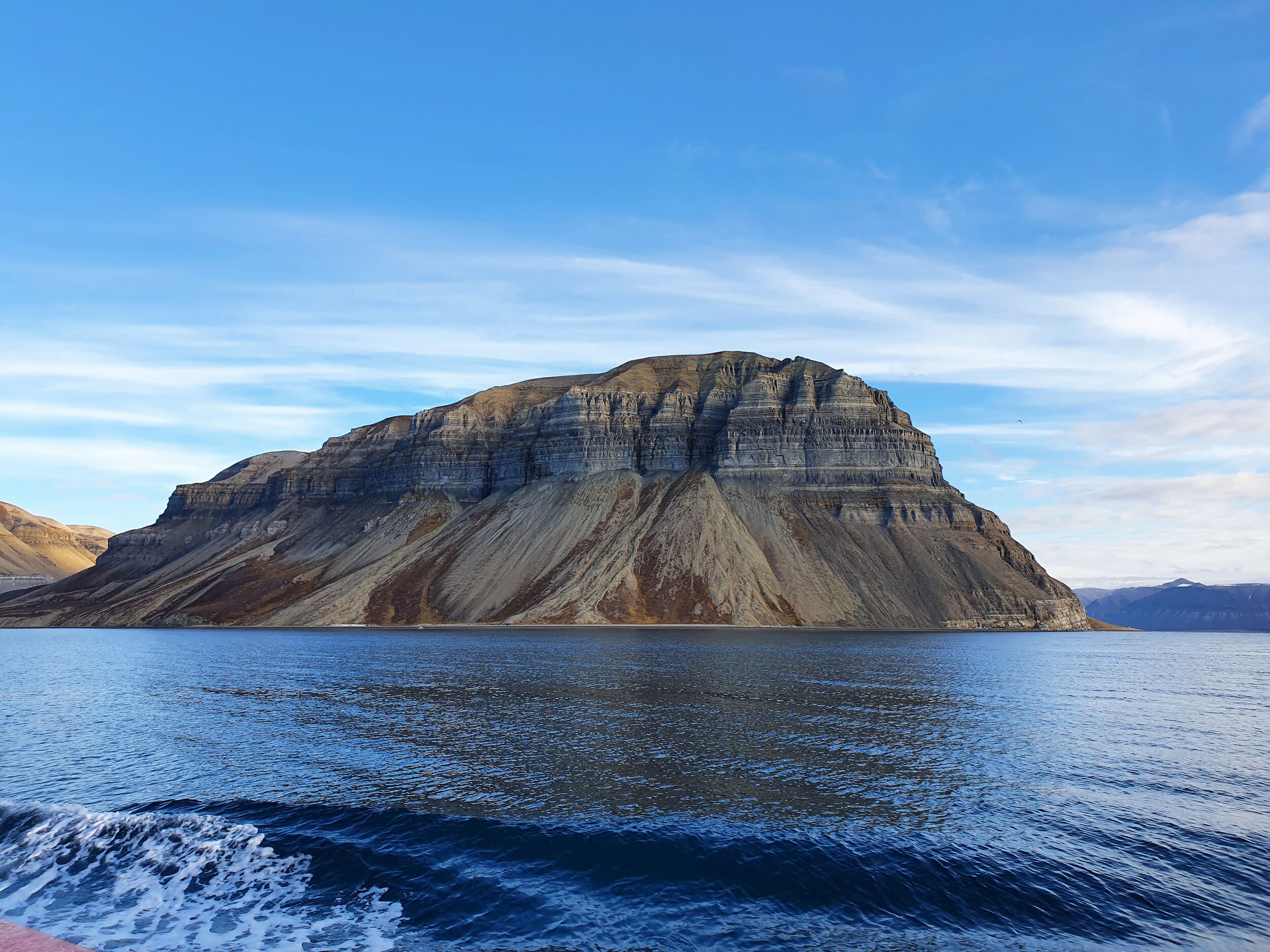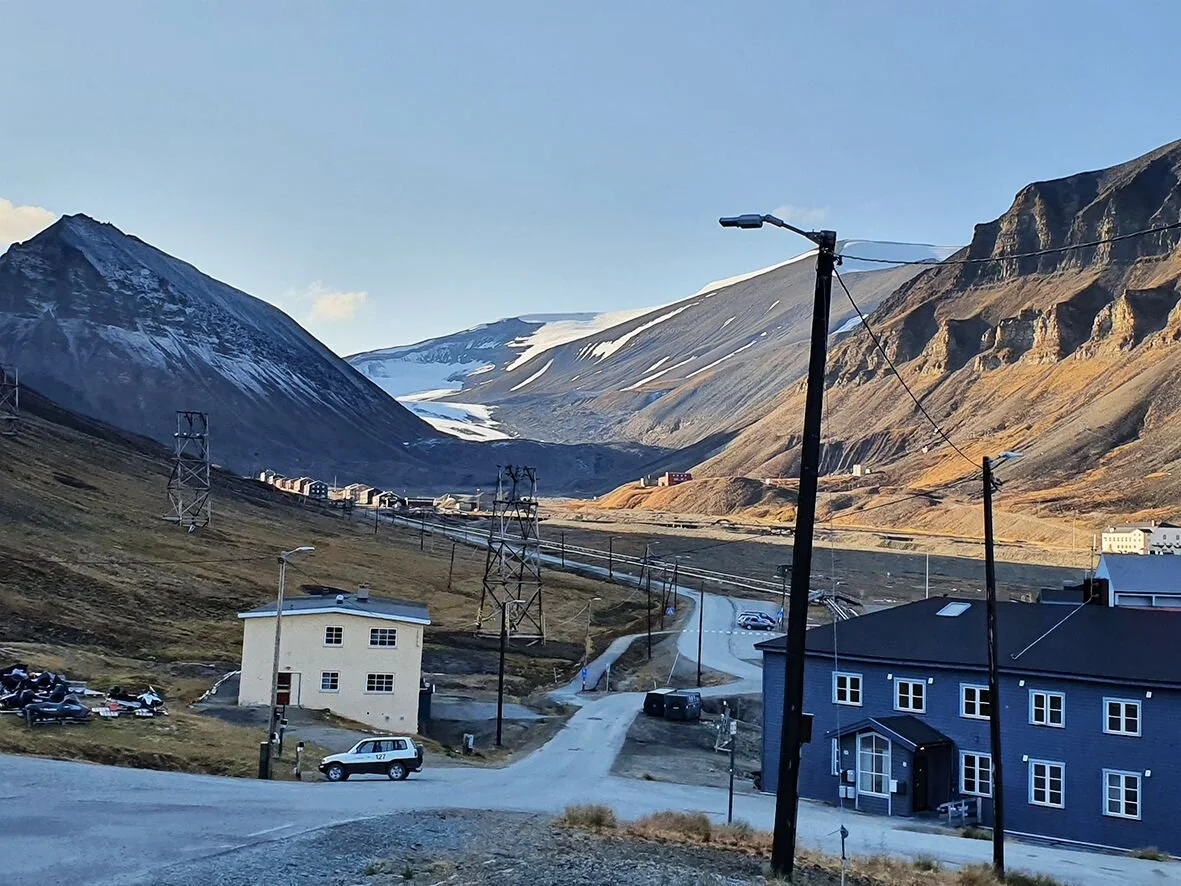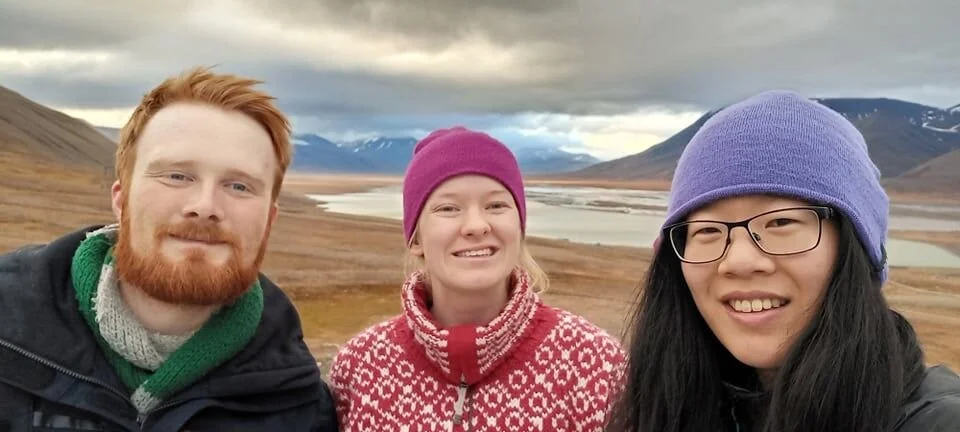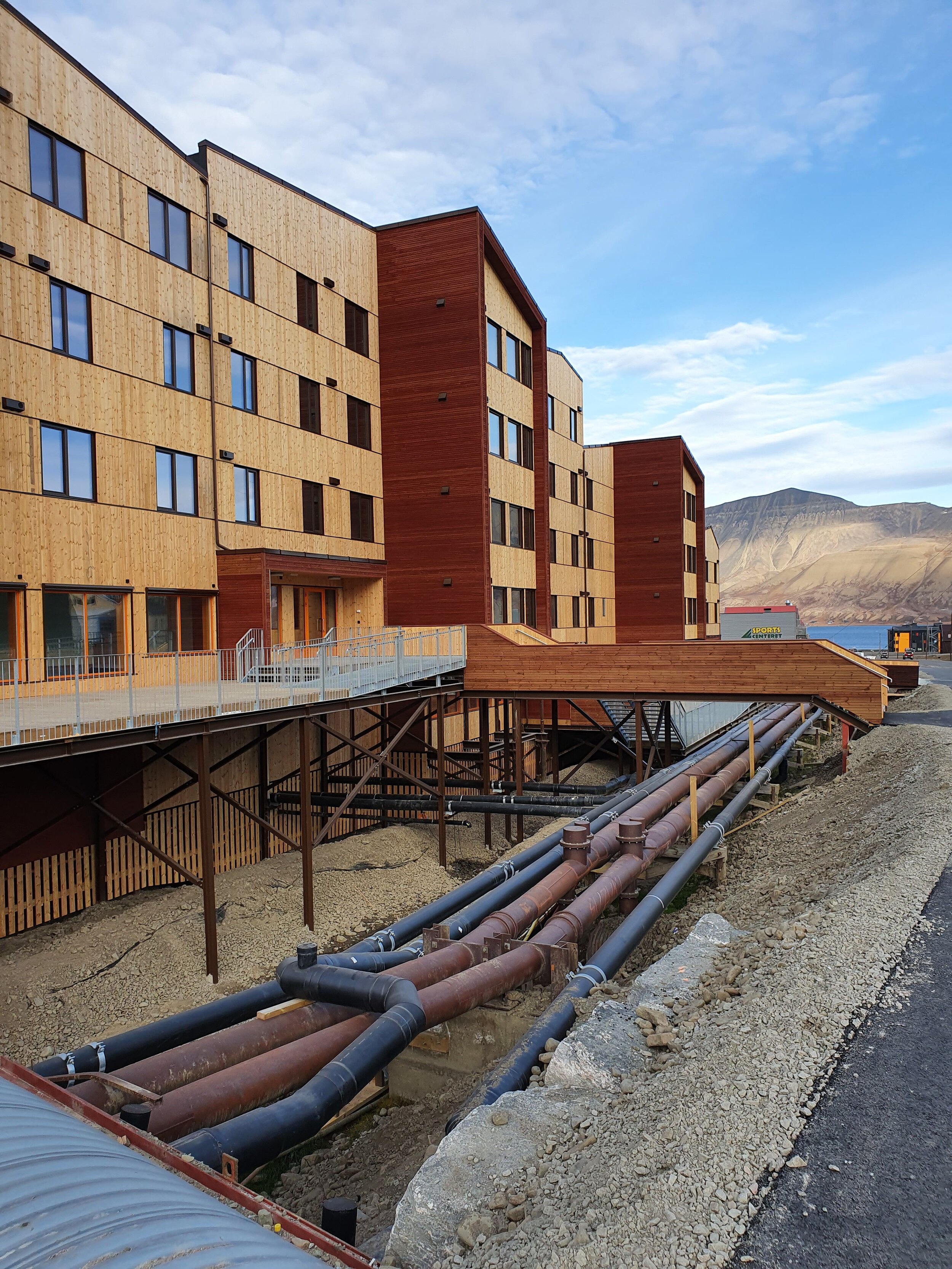The Polar Students

The Polar Students
“…I miss being able to go for a walk without having to bring a rifle.”. The NMBU polar students Fredik, Ingvild and Lin Martine has had the opportunity to experience Svalbards harsh nature and way of living. Our journalist Benjamin took a chat with them about their experiences from their stay here at the far north.
Journalist og fotograf: Benjamin Alexander Faulkner
The “Skansen” mountain. The stripes are ancient layers of sea floor. Foto: Benjamin Alexander Faulkner
The students have always lived here, but the area is threatened by avalanches. Foto: Benjamin Alexander Faulkner
Longyearbyen
Seldom has a view from an aircraft blown me away. Svalbard is beautiful, but also unquestionably otherworldly and vast. You will rarely see anything green. Every so often, the sun breaches through the clouds, and the tundra glistens in drab complexions of brown and grey with red tones – the Svalbardian colour palette. Magnificent mountains and their crowns of ice rise above the frozen waters, and are so devoid of vegetation that their geological histories are as easily read as a children’s novel. The ancient glaciers sleepily watch over the valleys they themselves excavated eons ago. Settled on the edge of such a valley is a cluster of buildings mounted on poles, a convoluted jumble of water pipes and a bunch of snow scooters and long-outdated Toyotas. The rusty cable cars which once conveyed coal to the harbour remain as the last witnesses to a crude, industrial past. Only one coal mine remains. It feeds the black heart of Longyearbyen: the coal power plant which provides power and hot water for heating. As the mines closed one by one, wilderness tourism and arctic research have taken over.
Polar students
Out of 2 500 citizens, 350 of these are students from universities all over the world, come to take advantage of the unique landscape. Here, they can document geological formations and eco-systems which are otherwise virtually inaccessible. But what is it like to live here as a student? The coffee is remarkably good at the café Fruene, 2070 kilometres from the Agrarian Metropole. I am joined by Lin Martine Andorsen (21), Ingvild Bergan (20) and Fredrik Selmer (22). Has Svalbard met their expectations?
The biology students Fredrik Selmer (22), Ingvild Bergan (20) og Lin Martine Andorsen (21). Foto: Benjamin Alexander Faulkner
Closed bubble
"I find it a bit shut in. I miss being able to go for a walk without having to bring a rifle,” Ingvild reveals. The ice bear safe zone ends only a few metres away from the borders of the settlement. Long hikes take preparation, so what do the citizens do instead? Fredrik mentions a few things: “You can go rock climbing, kayaking, swimming or visit the gym. You’ve even got a cinema here. Considering the fact that there are only 2 500 people here – that's very good.”
Lin has also found ways of recreation. She has joined a local big band which welcomes any instruments. In addition, there are a few choirs – not to mention a ukulele band. Ås and Longyearbyen might have something in common after all: you’ve got to make your own fun.
Polar bears and parasites
All students are obligated to complete a security course where they learn how to survive everything from avalanches to polar bear attacks. Svalbard is a violent natural force which rewards caution and punishes recklessness. An occurrence happened a few years ago where two students went outside the safe zone without a rifle. One of them was attacked by a roaming polar bear, while the other one saved her life by throwing herself down a four-hundred-meter steep mountain side. She miraculously survived with only a broken arm, but the other one was beyond saving. Ingvild, Lin and Fredrik have had a few close calls themselves. Ingvild tells me that they were just about to leave a building when they heard someone yell “POLAR BEAR!” around the corner, and had to run inside again. Another time was when they were on a field trip and had witnessed the Governor of Svalbard chase a polar bear through the valley with a helicopter. They received a message from UNIS to discontinue the field trip and come home. There is always an element of danger up here. Lin points at another invisible terror: “The parasite which gives you a brain tumour if you are a bit careless. If you touch rocks or something on field trips, you have to use antibac.” The more they reveal, the more I realize that we are far away from the gentle and relaxed nature back on the mainland. Here, everyone understands that they live on the goodwill and mercy of Svalbard.
The new buildings are constructed by Skanska Husfabrikken. The pipes conduct hot water between buildings.. Foto: Benjamin Alexander Faulkner
Residential problems
The students at Longyearbyen used to live in the old town “Nybyen”, but that was never easy. Nybyen is placed in high risk of avalanches, and in April, the students had to move out just before the exams, with no idea of when they could return. Luckily, new student housing has finished construction. They look like fancy versions of the student housing at Skogveien: cool angles, two types of woodwork and traditional roofing. Here, 250 students live in two-bed rooms. Lin, Ingvild and Fredrik say the first weeks were a little bizarre. The student housing was more or less unfinished. They had no vacuum cleaners the first week, and when they finally received them, the management had randomly locked the broom closets. Even the ovens were locked. No one knew where the washing machines were, and when they found them, there were no drying racks to hang the washing up on. As mentioned, the bedrooms had two beds. Good for night-overs, you say? Not at all. If you are caught with visitors who have spent the night, you’ll be evicted.
In good spirits
Our three agrarmetropolitan delegates to the polar bear realm are - admirably enough - still in good spirits in spite of the varied sources of frustrations and life-threatening perils. Soon, Svalbard will descend into a thick and everlasting darkness, the polar bears will be drawn towards Longyearbyen in search of food and the dry wintery air will cause static shocks every five minutes. If they are really lucky, the old coal power plant won’t break down as it did three times last winter. No matter what happens to our brave expeditionary students, it is easy to keep your spirits high: Svalbard is exempted from taxes on beer and wine!




